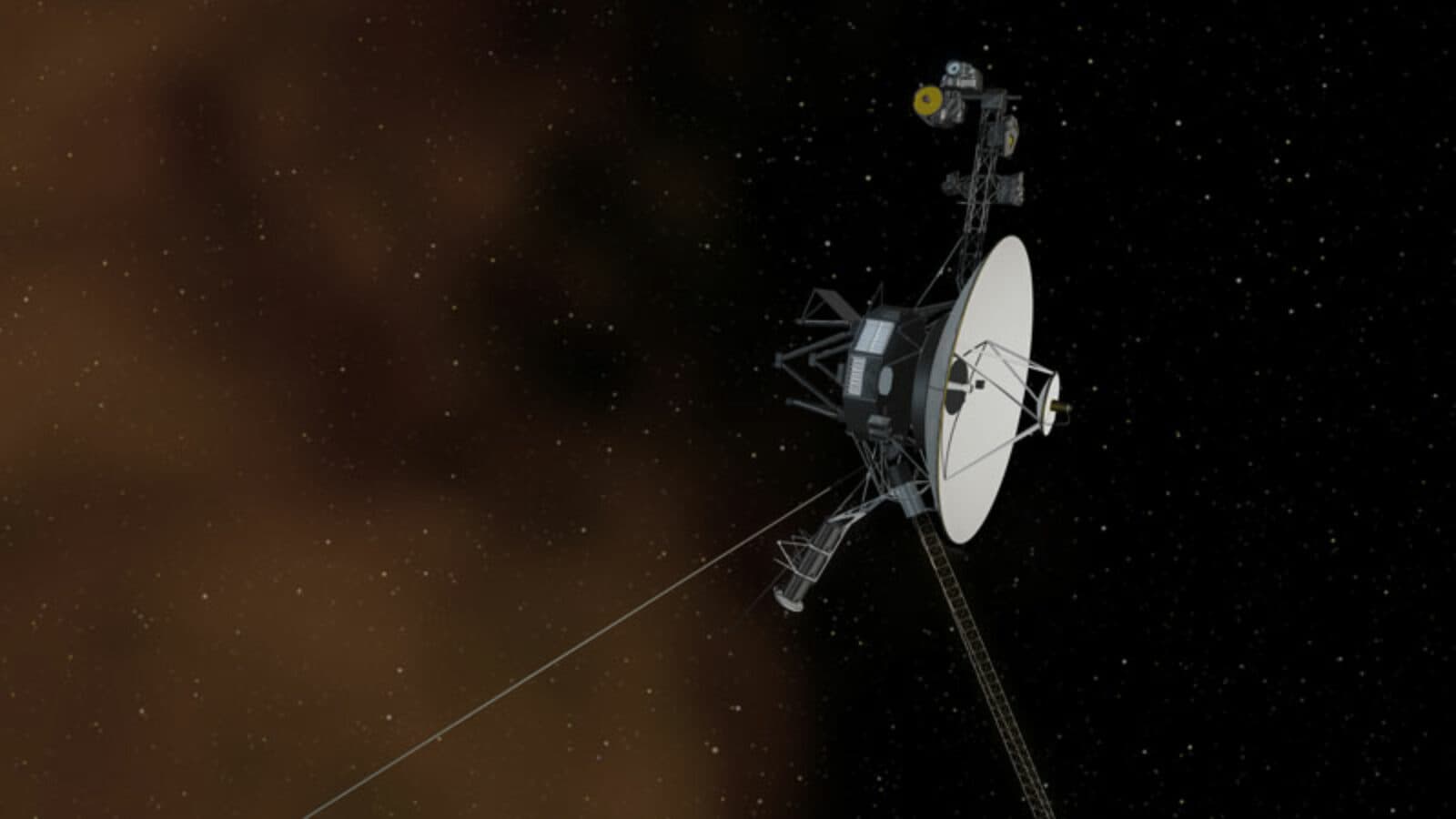Voyager 1 is Now in the Interstellar Medium

(Originally published by Massachusetts Institute of Technology)
September 12, 2013
Voyager 1 is now in the interstellar medium, according to a paper to be published in Science (September 13, 2013).
"Launched over 35 years ago, Voyagers 1 and 2 are on an epic journey outward from the Sun to reach the boundary between the solar plasma and the much cooler interstellar medium," reads the abstract.
"The boundary, called the heliopause, is expected to be marked by a large increase in plasma density, from about 0.002 cm-3 in the outer heliosphere, to about 0.1 cm-3 in the interstellar medium. On April 9, 2013, the Voyager 1 plasma wave instrument began detecting locally generated electron plasma oscillations at a frequency of about 2.6 kHz. This oscillation frequency corresponds to an electron density of about 0.08 cm-3, very close to the value expected in the interstellar medium. These and other observations provide strong evidence that Voyager 1 has crossed the heliopause into the nearby interstellar plasma."
The paper, by D. A. Gurnett, W. S Kurth, L. F. Burlaga, N. F. Ness, is entitled In Situ Observations of the Interstellar Plasma with Voyager 1.
It may be that Voyager 1 crossed the heliopause as early as August 25, 2012, more than a year ago. It has taken more than a year to reach the conclusion that Voyager 1 is in the interstellar medium because the possibility of observing the interstellar plasma using the plasma wave instrument only occurs episodically, when energetic electron beams excite local plasma oscillations in the interstellar plasma. If these oscillations are not excited, there is no way to measure the local plasma density on Voyager 1. The instrument that would be making those measurements, the MIT plasma probe, which every few minutes directly measures the density of the low energy plasma, failed many years ago on Voyager 1, just after the Saturn encounter.

If the MIT instrument had been alive on Voyager 1, its observations would have provided immediate evidence of the heliopause crossing a year ago. In contrast, the MIT plasma instrument on Voyager 2 is alive and well, and measuring the properties of the shocked solar wind after the Voyager 2 crossing of the termination shock in September of 2007. The most recent data from that instrument dates from the beginning of this month, September 2, 2013, and you can find that Voyager 2 data displayed here.
Dr. John Richardson of MIT's Kavli Institute for Astrophysics and Space Research is the Principal Investigator on the Voyager Plasma Instrument, succeeding Professor John Belcher, who in turn succeeded Professor Herbert Bridge. The Voyager plasma instruments were built at MIT under the leadership of Professor Bridge, who was one of the pioneers in the exploration of spacecraft from unmanned spacecraft. Bridge came to the Massachusetts Institute of Technology in 1946 to join the cosmic ray and elementary particle group headed by Bruno Rossi, under whose supervision he received his Ph.D. in physics in 1950. He was the leader of a group of physicists at MIT who designed and constructed a novel instrument for the study of interplanetary plasma, the modulated-grid Faraday cup. This instrument was successfully flown aboard the Explorer X spacecraft in the spring of 1961. For the first time, it provided direct measurements of the density and velocity of the solar wind (the supersonically expanding outer atmosphere of the sun), and on the interaction of the solar wind with the magnetic field of the Earth. After that initial discovery, Herb was Principal Investigator on space plasma experiments aboard numerous unmanned scientific missions. He holds the unique distinction of having been Principal Investigator on missions to every planet in the solar system.
A press conference is being held on September 12 at NASA's headquarters in Washington, DC at 2PM EDT. For additional information, please visit NASA TV, the NASA news website, and also NASA JPL Live.